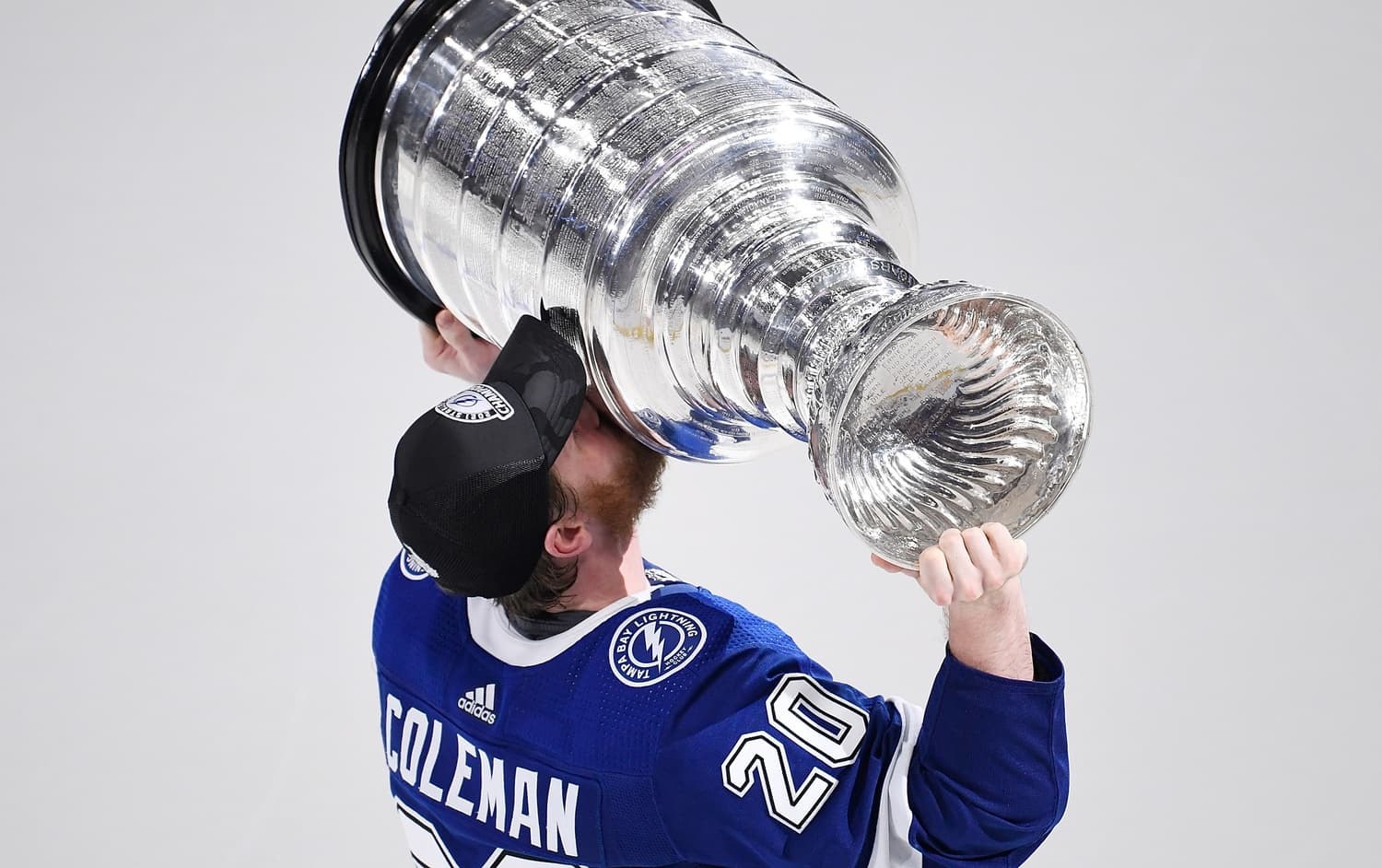Nation Sites
The Nation Network
FlamesNation has no direct affiliation to the Calgary Flames, Calgary Sports and Entertainment, NHL, or NHLPA
The good, the bad, and the surprising about Blake Coleman’s Flames deal

Photo credit: Douglas DeFelice-USA TODAY Sports
The dust from the annual free agency frenzy has settled and now we’re left to sift among the various deals that were signed. The biggest splash that was made by the Calgary Flames was the deal that brought winger Blake Coleman to town with a deal that will pay him $4.9 million annually between now and the 2026-27 season.
Once you dig into the contract deals, there’s a lot to like.
The deal structure
Via our friends at PuckPedia, here’s the broad strokes of Coleman’s deal.
- 2021-22: $3.9 million total pay ($2.9 million salary, $1 million signing bonus)
- 2022-23: $4.9 million total pay (all salary)
- 2023-24: $5.9 million total pay (all salary)
- 2024-25: $4.9 million total pay (all salary)
- 2025-26: $4.9 million total pay (all salary)
- 2026-27: $4.9 million total pay (all salary)
That’s right: almost all salary. Of the $29.4 million owed to him, only $1 million is signing bonuses. Compare that to Zach Hyman ($6.25 million of $38.5 million) and Phillip Danault ($14.5 million of $33 million), and Coleman’s bonuses seem incredibly low.
Heck, Sam Bennett’s new deal in Florida has as much signing bonuses in it as Coleman’s.
A buyout-friendly deal, if it comes to that…
One of the reasons why a deal that’s mostly salary is favourable for a team is simple: buyouts. Teams can buy out salary remaining, but not bonuses. Milan Lucic has a deal that’s chock full of bonus money, rather than salary, so the cap savings of buying him out are extremely minuscule compared to, say, James Neal’s.
Coleman’s deal is almost all salary, and entirely salary after the first season. He’ll turn 30 in November. If his playing style catches up to him by, say, age 33 or 34, the Flames can buy him out and the annual cap hit would be $1.633 million for twice as many years as he has remaining. By the time his fourth or fifth year rolls along, the NHL’s salary cap will be jumping up quite a bit – the escrow debt that the players owe will be paid off by then, allowing the full weight of the new American TV deals to hit the cap – and a tiny cap payment in the event of a Coleman buyout would be a pittance.
And maybe he doesn’t fall off at the end of his deal and this is a moot point. But the salary structure gives the Flames a lot of flexibility.
Clause structure
Originally reported by our pal Hailey Salvian over at The Athletic, Coleman’s deal has a full no-trade clause for the first three seasons and then a 10-team trade list for the last three years. Again, this bakes in a lot of flexibility for both player and team. (I’d be willing to guess that the team asked for the salary structure and the player requested some trade protection in exchange.)
Either way, like Jacob Markstrom’s deal last fall, the structure and clauses of Coleman’s new deal show a lot of cleverness and protections built in for both camps, which is definitely something that will keep players answering the phone when Brad Treliving calls to ask if they’d like to sign with the Flames in the future.
Breaking News
- Instant Reaction: Flames grind out road win in Los Angeles
- Flames Game Day 33: Escape to L.A. (8pm MT, CBC/SN/City)
- Wranglers Series Preview: A back to back reset against the Abbotsford Canucks
- NHL Notebook: Canucks trade Quinn Hughes to Wild
- Cole Reschny is poised to make Team Canada’s final World Junior roster
